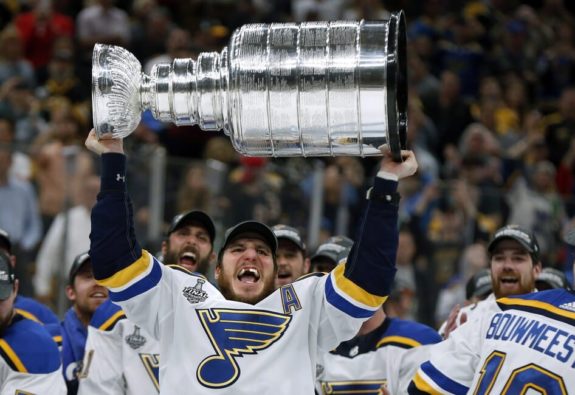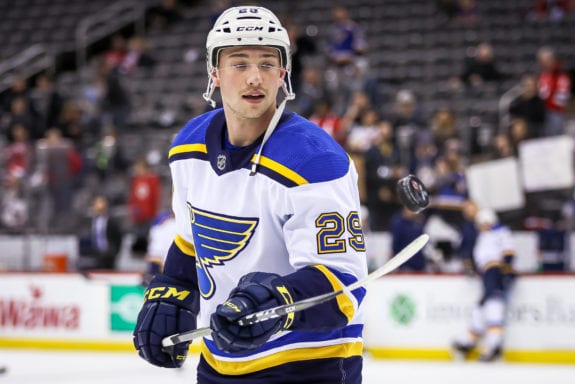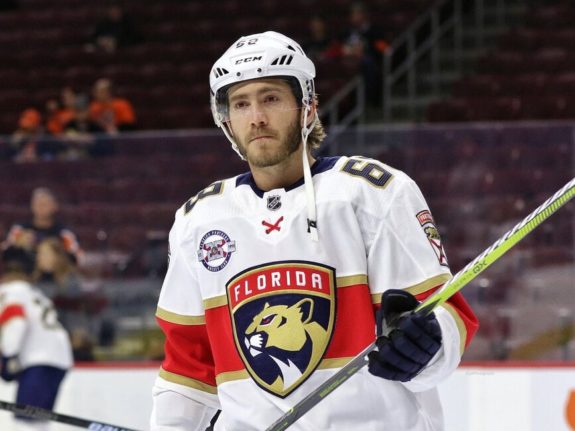In the wake of the St. Louis Blues great and Stanley Cup champion Alexander Steen’s decision to retire, we certainly must toast a great career but also remember that life goes on. The loss of the winger represents real challenges in filling his role as a first-line forward and as a leader in the locker room.
Steen expected to miss significant time this season, so while filling his spot in the lineup was planned and prepped for, the 36-year-old also represented a substantial financial commitment to the organization. While it is not a cut and dried redo opportunity to add depth to the lineup or potentially get a midseason acquisition, it certainly is worth looking at in terms of what precisely the Blues can do now and how some careful planning may open up new or different avenues for the organization to best benefit.
Real Money vs. Cap Money
Heading into the 2020-21 campaign, the Blues now-former alternate captain’s total cap hit would have been $5.75 million. However, his real amount owed is less — only about $3.5 million, due to his contract’s front-loaded nature (all figures provided by CapFriendly).
Still, in the wake of the COVID-19 pandemic with finances very much at odds with traditional views of contracts and retirement, the Blues could recover some of the $3.5 million if the contract is insured. But the reality is that the larger number is far more valuable to the organization’s hockey operations.

Before Steen’s announcement, the Blues were a worrisome $1.175 million over the cap limit and had to eliminate that overage to become cap compliant. The retirement alleviates that problem and puts the organization back into the green, to speak, freeing up some cap space to use to fortify the current roster — more on that later. Unfortunately, due to the complexities of the salary cap structure, the answer to “how much money they have” isn’t so clear.
Because Steen’s retiring with an injury and being placed on Long Term Injury Reserve (LTIR), his contract will 100% come off the books and provide $4.575 million to spend. However, due to his injury and thus placement on LTIR coming during the offseason, the Blues’ unspent money would no longer become available to them the second the season begins. However, should they be able to shed that $1.175 million overage before the season opens and wait to place Steen on LTIR when the regular season starts, all of the $5.75 million would become available to them to use.
An apparent conundrum emerges. You can add now to a lesser financial extent or you can add later with a larger war chest, but you must move a player to become cap compliant to do so.
Personnel Decisions
Before general manager Doug Armstrong and the Blues’ front office brain trust can make the hard decisions about how best to spend this new money — and if they want to offload a contract in order go after bigger fish potentially — they have to get their own house in order.
Vince Dunn played 71 regular season games for the Blues last season and 78 the season before. He was a central part of the 2019 Stanley Cup run and a core member of a defensive group who will be without the services of their former captain Alexander Pietrangelo for the first time in a very long time.

Dunn is also the only current Blue without a contract, still sitting on the market as a restricted free agent. Last season he made a “measly” $722,500. That would be the least any player on the team makes this season, and the 24-year-old defenseman is due for a raise.
It’s hard to say the exact value that Dunn could negotiate, considering this is not an open market negotiation. The Blues can lowball him to pretty much any degree they wish as it is unlikely he receives an offer sheet from any other club. There is an opportunity to get Dunn locked up for multiple years given this new space; however, it is equally possible the team goes for the lowest possible number to get more cash to spend on an impact free agent.
Regardless. A decision on Dunn has to get done to move on.
Evaluating the Market and Finding Targets
Those left on the free-agent market with less than a month left before the altered season start date are in an equally curious predicament in terms of money management. Like Mike Hoffman and Mikael Granlund, stars have been left at the altar with no deal and very few teams with cap space to fit them even without their desired pay raises.
Last season, Hoffman made $5.187 million with the Florida Panthers, and as it stands now, only seven franchises could cover that deal without taking into account potential internal caps. Free agents left on the market will have to accept significant pay cuts, which plays in St. Louis’s favor. They now have cash and can set the market.
Regarding what kind of player the Blues go after, a forward seems to be a clear need. While a goaltender may be necessary as an insurance policy for Jordan Binnington, with leading scorer Vladimir Tarasenko likely to miss significant time after shoulder surgery, and now Steen out of the top line, an impact forward seems preferential.

Hoffman and Granlund are the top free-agent candidates on the market, while the Blues current budget is on the lower side of the expected ballpark either candidate could fetch. With the Blues’ ability to pay a competitive salary while also being the most competitive team (in the standings) of the group of now eight teams who can afford these players, St. Louis may be able to put together a very attractive package for the free-agent forwards.
The Blues have decisions to make now and the flexibility to make them. While time is running out to make a move and with news of the seasons start dates fast approaching, the team now has the luxury to make choices about if they want to improve the club, how to do that, or if they are comfortable standing pat and taking on the NHL with the group they have.